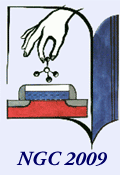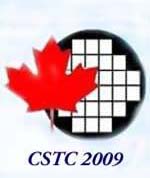
|
Nano and Giga Challenges in Electronics, Photonics and Renewable Energy | 14th Canadian Semiconductor Technology Conference |

 |
|
 |
|
|
The worlds of microelectronics and biosystems have had very few, if any, common points. They, indeed, differ in use of materials (based on silicon rather than on carbon), information carriers (electron and holes rather than ions), length scales (0.1 µm rather than 10 µm), and time scales (10-8 s rather than 10-3 s). It is, thus, not strange that for many years microelectronics has ignored biology, typically considering biosystems as a source of contamination for rinsing water in device processing. Recently, however, the exponential growth of microelectronics has allowed the construction of complex electronic systems with comparable size to that of the biological unit—the cell. This occurrence permits, at least in principle, the exploration of living system at the sub-cellular level. The exploitation of silicon devices for that purpose, however, is made difficult by the fact that the CMOS technology was developed to decouple as far as possible the electronic device from the external world, and that this effort has continued even with the most recent developments. My lecture at the NGC/CSTC 2009 meeting is addressed to the search of which combinations of architectures, materials, and processes are expected to allow the sensing of the electrical and chemical properties of cells on the 10 nm length scale. The availability of such systems is expected to be able to produce a shift of paradigm in medicine. Order-of-magnitude feasibility calculations indicate, indeed, that nano-robots (artificial machines with overall size on the order of a few micrometres or less in all spatial directions and constituted by nanoscopic components with individual dimensions in the interval 1-102 nm) are not physically impossible [1]. Their availability "will finally give physicians the most potent tools imaginable to conquer human disease, ill—health, and aging" [2]. The talk is addressed to speculate on the possibilities and difficulties of this new world—silicon in vivo. [1] A. A. G. Requicha, "Nanorobots, NEMS, and Nanoassembly", Proc. IEEE 91, 1922—1933 (2003). [2] R. A. Freitas, Jr., "Current Status of Nanomedicine and Medical Nanorobotics", J. Comput. Theor. Nanosci. 2, 1—25 (2005). |